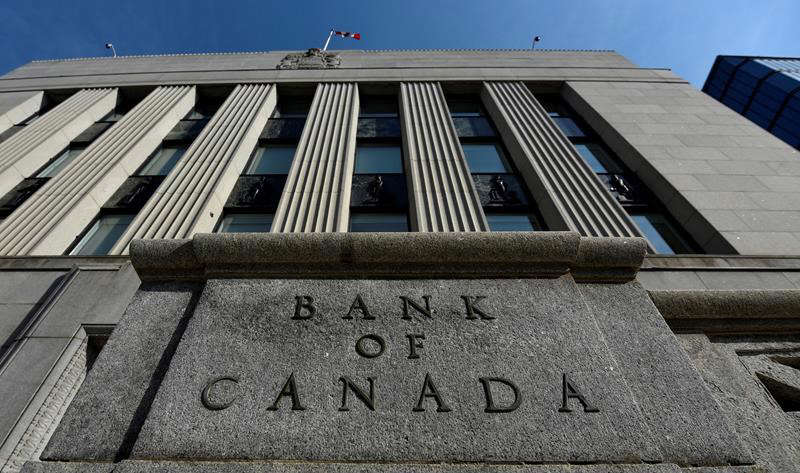Fraser Institute
Carney government’s housing plan poses major risks to taxpayers

From the Fraser Institute
By Jake Fuss and Austin Thompson
A trade war, Trump’s threats to Canada’s sovereignty, and global economic volatility loomed large in the recent federal election. Yet many voters remained focused on an issue much closer to home: housing affordability.
In 2023, under Justin Trudeau, Canada added a record high 1.2 million new residents—more than double the previous record in 2019—and another 951,000 new residents last year. All told, Canada’s population has grown by about 3 million people since 2022—roughly matching the total population increase during the entire decade of the 1990s. Not surprisingly, homebuilding has failed to keep pace. In fact, housing construction rates have barely exceeded 1970s levels, even though the population has more than tripled since then. The result—a historic surge in housing costs.
On the campaign trail, the Liberals set an immigration target of about 400,000 per year, which is lower than the recent record highs but still high by historical standards, and tabled a plan they claim will double Canada’s residential construction rate to 500,000 new homes per year within a decade. But is it a good plan? And can the Liberals deliver it?
First, the good news. To help boost private homebuilding, the Carney government promised to introduce tax incentives including a rental building allowance, which would help reduce the tax bill on new multi-unit rental buildings, and a GST exemption for some first-time homebuyers, which may reduce the cost of newly-built homes and spur more homebuilding. The government also plans to expand the “Housing Accelerator Fund,” which offers federal dollars to municipalities in exchange for more flexible municipal building rules, and modernize the federal building code, which could shorten construction timelines. While much will depend on execution, these policies rightly aim to make it faster, cheaper and more attractive for the private sector to build homes.
Now, the bad news. The Carney government plans to create a new federal entity called Build Canada Homes (BCH) to “get the government back in the business of building.” According to Carney’s vision, the BCH will act “as a developer to build affordable housing” and provide more than “$25 billion in financing” to homebuilders and “$10 billion in low-cost financing and capital” for homebuilders to build “affordable” homes.
We’ve seen a similar movie before. In 2017, the Trudeau government created the Canada Infrastructure Bank (CIB) to invest in the “next generation of infrastructure Canadians need.” Since then, the CIB has approved approximately $13.2 billion in investments across 76 projects (as of July 2024), yet only two CIB-funded projects had been completed, prompting the authors of a multi-party House of Commons committee report to recommend abolishing the CIB.
The bureaucrats who will run the BCH won’t have the private sector’s expertise in housing development, nor the same incentives to keep costs down. BCH’s mandate is already muddled by competing goals—it must deliver “affordable” homes while simultaneously prioritizing certain building materials (e.g. Canadian softwood lumber), which could increase building costs.
The plan for BCH’s multi-billion-dollar loan portfolio includes significant “low cost” (that is, taxpayer subsidized) financing, a huge bet on prefabricated homebuilding, and no certainty about who will be on the hook for any failed projects—combined, this represents a major increase in costs and risks for taxpayers at a time when they already shoulder rising federal deficits and debt.
There’s also a real risk that BCH will simply divert limited investment dollars and construction resources away from private homebuilding—where projects respond to the needs of Canadian homebuyers and renters—and toward government-backed housing projects shaped by political goals. Instead of boosting overall homebuilding, BCH may simply reshuffle limited resources. And, as noted by the government, there’s a severe shortage of skilled construction labour in Canada.
It’s hard to see how Carney’s housing plan would double the pace of homebuilding in Canada—a very ambitious target that would require not only prudent housing policies but greater domestic savings, an implausibly large expansion in the construction workforce (which grew by only 18.4 per cent over the last decade), and the political fortitude to endure vocal opposition to housing development in certain neighbourhoods and on public lands.
Canada’s housing crisis will benefit from federal leadership—but not federal overreach. Rather than overpromising what it can’t deliver, the Carney government should refocus on what it’s best positioned to do: reform incentives, streamline regulations, and nudge municipalities and provinces to remove constraints on homebuilding. Trying to also act as a housing developer and lender is a far riskier approach.
Banks
To increase competition in Canadian banking, mandate and mindset of bank regulators must change

From the Fraser Institute
By Lawrence L. Schembri and Andrew Spence
Canada’s weak productivity performance is directly related to the lack of competition across many concentrated industries. The high cost of financial services is a key contributor to our lagging living standards because services, such as payments, are essential input to the rest of our economy.
It’s well known that Canada’s banks are expensive and the services that they provide are outdated, especially compared to the banking systems of the United Kingdom and Australia that have better balanced the objectives of stability, competition and efficiency.
Canada’s banks are increasingly being called out by senior federal officials for not embracing new technology that would lower costs and improve productivity and living standards. Peter Rutledge, the Superintendent of Financial Institutions and senior officials at the Bank of Canada, notably Senior Deputy Governor Carolyn Rogers and Deputy Governor Nicolas Vincent, have called for measures to increase competition in the banking system to promote innovation, efficiency and lower prices for financial services.
The recent federal budget proposed several new measures to increase competition in the Canadian banking sector, which are long overdue. As a marker of how uncompetitive the market for financial services has become, the budget proposed direct interventions to reduce and even eliminate some bank service fees. In addition, the budget outlined a requirement to improve price and fee transparency for many transactions so consumers can make informed choices.
In an effort to reduce barriers to new entrants and to growth by smaller banks, the budget also proposed to ease the requirement that small banks include more public ownership in their capital structure.
At long last, the federal government signalled a commitment to (finally) introduce open banking by enacting the long-delayed Consumer Driven Banking Act. Open banking gives consumers full control over who they want to provide them with their financial services needs efficiently and safely. Consumers can then move beyond banks, utilizing technology to access cheaper and more efficient alternative financial service providers.
Open banking has been up and running in many countries around the world to great success. Canada lags far behind the U.K., Australia and Brazil where the presence of open banking has introduced lower prices, better service quality and faster transactions. It has also brought financing to small and medium-sized business who are often shut out of bank lending.
Realizing open banking and its gains requires a new payment mechanism called real time rail. This payment system delivers low-cost and immediate access to nonbank as well as bank financial service providers. Real time rail has been in the works in Canada for over a decade, but progress has been glacial and lags far behind the world’s leaders.
Despite the budget’s welcome backing for open banking, Canada should address the legislative mandates of its most important regulators, requiring them to weigh equally the twin objectives of financial system stability as well as competition and efficiency.
To better balance these objectives, Canada needs to reform its institutional framework to enhance the resilience of the overall banking system so it can absorb an individual bank failure at acceptable cost. This would encourage bank regulators to move away from a rigid “fear of failure” cultural mindset that suppresses competition and efficiency and has held back innovation and progress.
Canada should also reduce the compliance burden imposed on banks by the many and varied regulators to reduce barriers to entry and expansion by domestic and foreign banks. These agencies, including the Office of the Superintendent of Financial Institutions, Financial Consumer Agency of Canada, Financial Transactions and Reports Analysis Centre of Canada, the Canada Deposit Insurance Corporation plus several others, act in largely uncoordinated manner and their duplicative effort greatly increases compliance and reporting costs. While Canada’s large banks are able, because of their market power, to pass those costs through to their customers via higher prices and fees, they also benefit because the heavy compliance burden represents a significant barrier to entry that shelters them from competition.
More fundamental reforms are needed, beyond the measures included in the federal budget, to strengthen the institutional framework and change the regulatory mindset. Such reforms would meaningfully increase competition, efficiency and innovation in the Canadian banking system, simultaneously improving the quality and lowering the cost of financial services, and thus raising productivity and the living standards of Canadians.
Business
Carney government should privatize airports—then open airline industry to competition

From the Fraser Institute
By Alex Whalen and Jake Fuss
This holiday season, many Canadians will fly to spend time to with family and friends. But air travellers in Canada consistently report frustration with service, cost and choice. In its recent budget, the Carney government announced it will consider “options for the privatization of airports.” What does this mean for Canadians?
Up until the 1990s, the federal government served as both the owner and operator of Canada’s major airports. The Chrétien government partially privatized and transferred the operation of major airports to not-for-profit airport authorities, while the federal government remained the owner of the land. Since then, the federal government has effectively been the landlord for Canada’s airports, collecting rent each year from the not-for-profit operating authorities.
What would full privatization of airports look like?
If the government allows private for-profit businesses to own Canada’s major airports, their incentives would be to operate as efficiently as possible, serve customers and generate profits. Currently, there’s little incentive to compete as the operating authorities are largely unaccountable because they only report to government officials in a limited form, rather than reporting directly to shareholders as they would under privatization. Private for-profit airports exist in many other countries, and research has shown they are often less costly for passengers and more innovative.
Yet, privatization of airports should be only the first step in a broader package of reforms to improve air travel in Canada. The federal government should also open up competition by creating the conditions for new airports, new airlines and new investment. Currently, Canada restricts foreign ownership of Canadian airlines, while also restricting foreign airlines from flying within Canada. Consequently, Canadians are left with little choice when booking air travel. Opening up the industry by reversing these policies would force incumbent airlines to compete with a greater number of airlines, generating greater choice and likely lower costs for consumers.
Moreover, the federal government should reduce the taxes and fees on air travel that contribute to the cost of airline tickets. Indeed, according to our recent research, among peer countries, Canada has among the most expensive air travel taxes and fees. These costs get passed on to consumers, so it’s no surprise that Canada consistently ranks as a very expensive country for air travel.
If the Carney government actually privatizes Canada’s airports, this would be a good first step to introducing greater competition in an industry where it’s badly needed. But to truly deliver for Canadians, the government must go much further and overhaul the numerous policies, taxes and fees that limit competition and drive up costs.
-

 National2 days ago
National2 days agoMedia bound to pay the price for selling their freedom to (selectively) offend
-

 Bruce Dowbiggin2 days ago
Bruce Dowbiggin2 days agoSometimes An Ingrate Nation Pt. 2: The Great One Makes His Choice
-

 Business1 day ago
Business1 day agoRecent price declines don’t solve Toronto’s housing affordability crisis
-

 MAiD14 hours ago
MAiD14 hours agoFrom Exception to Routine. Why Canada’s State-Assisted Suicide Regime Demands a Human-Rights Review
-

 MAiD2 days ago
MAiD2 days agoHealth Canada report finds euthanasia now accounts for over 5% of deaths nationwide
-

 Daily Caller2 days ago
Daily Caller2 days agoTech Mogul Gives $6 Billion To 25 Million Kids To Boost Trump Investment Accounts
-

 Automotive1 day ago
Automotive1 day agoPower Struggle: Governments start quietly backing away from EV mandates
-

 Energy1 day ago
Energy1 day agoUnceded is uncertain







